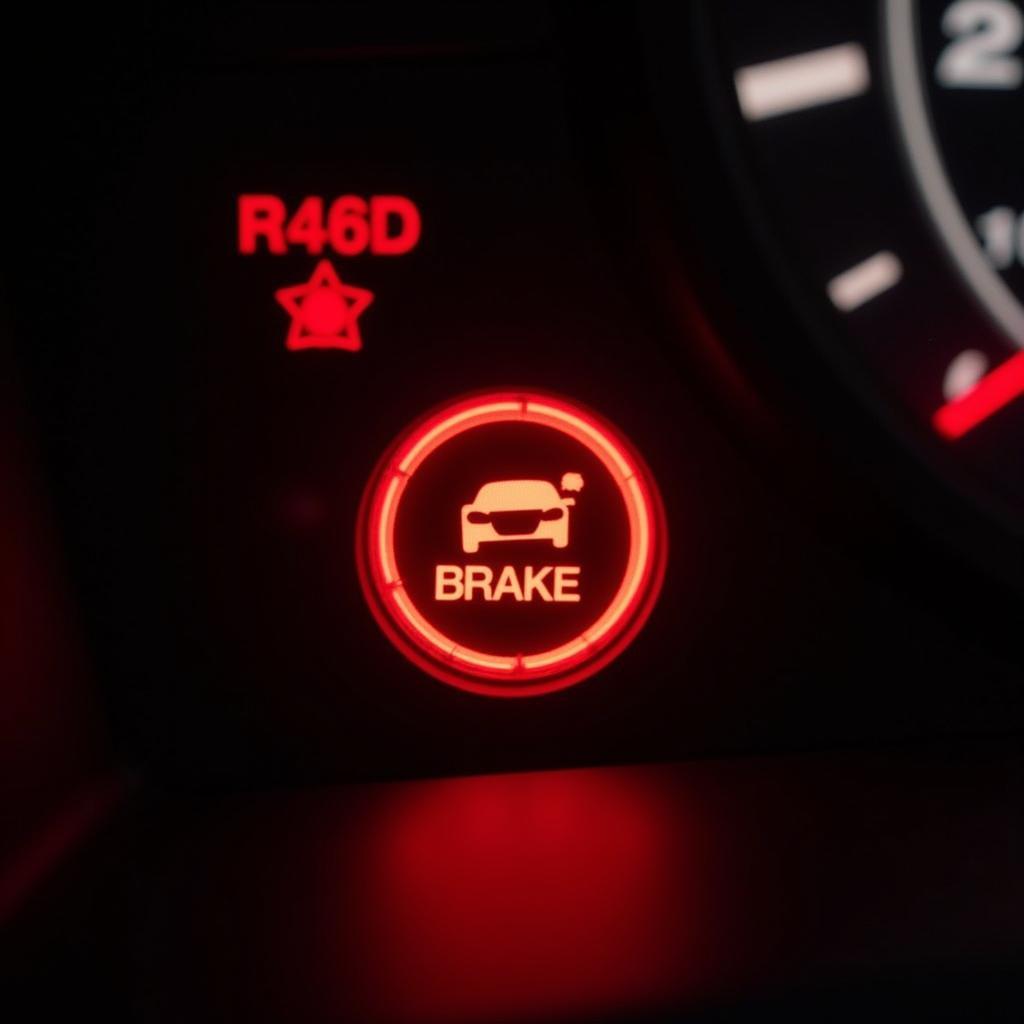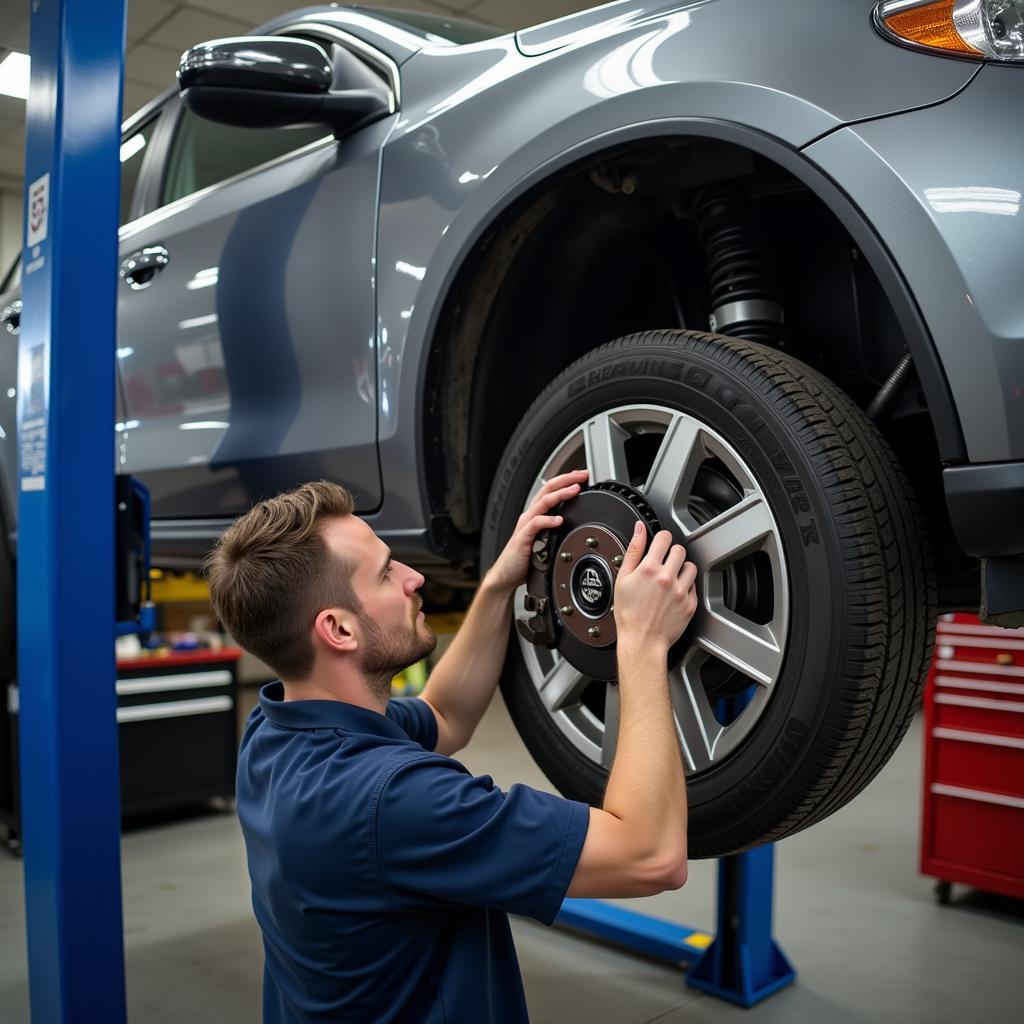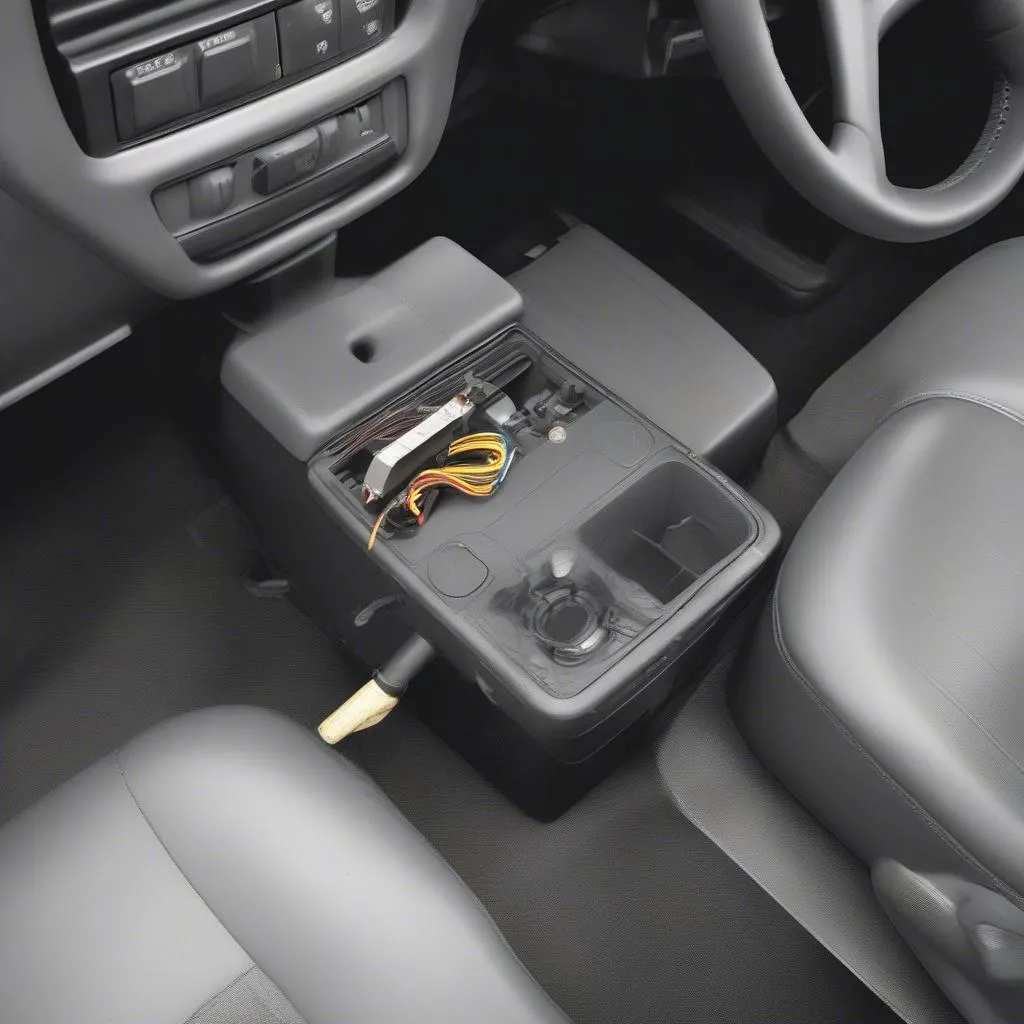The appearance of a brake warning light on your dashboard is a clear sign that something is amiss with your vehicle’s braking system and requires immediate attention. While it can be a nerve-wracking experience, understanding the potential causes and knowing how to address them can save you from costly repairs and ensure your safety on the road.
This comprehensive guide will delve into the common reasons behind a glowing brake warning light, guide you on diagnosing the issue, and provide potential solutions to get you back on the road safely.
What Does the Brake Warning Light Mean?
Your car’s brake warning light is designed to alert you about potential problems within the braking system. This illuminated signal, often appearing as a bright red circle with the word “BRAKE” or an exclamation mark within, can indicate several issues:
- Engaged Parking Brake: The most common reason for the brake light to illuminate is an engaged parking brake. Always ensure it’s fully released before driving.
- Low Brake Fluid: A more serious issue, low brake fluid level, often points towards a leak in the system, hindering your car’s ability to stop effectively.
- Worn Brake Pads: Brake pads have a finite lifespan. When they wear down beyond a safe limit, the brake warning light activates, signaling the need for replacement.
- Faulty Brake Sensors: Your car’s braking system uses sensors to monitor various components. A malfunctioning sensor can trigger the warning light even without an actual problem.
- ABS Issue: Modern vehicles equipped with Anti-lock Braking Systems (ABS) have a dedicated warning light. If this illuminates alongside the brake warning light, it indicates a potential problem within the ABS module or sensors.
 Car Dashboard with Brake Warning Light
Car Dashboard with Brake Warning Light
Diagnosing the Brake Warning Light
Identifying the root cause of the brake warning light requires a systematic approach:
- Check the Parking Brake: Ensure the parking brake is fully disengaged. If the light persists, move to the next step.
- Inspect Brake Fluid Level: Park your car on a level surface and locate the brake fluid reservoir (refer to your owner’s manual). Check if the fluid level is within the “MIN” and “MAX” marks. If it’s low, there might be a leak.
- Visual Inspection: Carefully examine the brake lines and hoses under your car for any signs of leakage, cracks, or damage.
- Check Brake Pads: Assess your brake pads’ thickness through the spaces between the wheel’s spokes. If they appear significantly thin or you hear a grinding noise while braking, it’s time for a replacement.
- Professional Diagnosis: If you are uncomfortable performing these checks or cannot pinpoint the issue, it’s crucial to seek professional help.
 Mechanic Diagnosing Brake Issue Using Diagnostic Tool
Mechanic Diagnosing Brake Issue Using Diagnostic Tool
How to Fix Brake Warning Light Issues
The solution to your brake warning light problem depends entirely on the diagnosis:
- Adding Brake Fluid: If the brake fluid level is low, carefully add the correct type of brake fluid recommended in your owner’s manual. However, if you notice a recurring need to top up, it indicates a leak that needs immediate professional attention.
- Brake Pad Replacement: Worn brake pads require immediate replacement. It’s a standard maintenance procedure that ensures optimal braking performance and safety.
- Addressing Brake Fluid Leaks: A brake fluid leak is a serious issue that needs professional repair. Driving with a leak can lead to brake failure and dangerous consequences.
- Sensor or ABS Issues: If you suspect a faulty sensor or problem with the ABS system, it’s best to have it diagnosed and repaired by a qualified mechanic.
 Car Undergoing Brake Repair in Auto Shop
Car Undergoing Brake Repair in Auto Shop
Remote Diagnostics and Software Solutions
In today’s technologically advanced world, remote diagnostics and software solutions play a significant role in car repair, including addressing brake warning light issues:
- Remote Diagnostics: Connect your car to a diagnostic tool, and qualified technicians can remotely access your vehicle’s computer system to identify the root cause of the brake warning light.
- Software Updates: Sometimes, outdated software in your car’s braking system can trigger false warning lights. Remote software updates can rectify these issues without needing a physical visit to a mechanic.
- Programming and Configuration: Modern vehicles with advanced braking systems often require specialized programming and configuration. Trained technicians can perform these remotely, ensuring optimal braking performance.
When to Seek Professional Help
While some brake warning light issues can be addressed with simple fixes like adding brake fluid or replacing worn pads, it’s crucial to remember that your car’s braking system is critical for your safety.
Seek immediate professional help if:
- You are uncomfortable performing any of the diagnostic steps.
- You suspect a brake fluid leak.
- The warning light persists even after adding brake fluid.
- You notice unusual noises or vibrations while braking.
- You experience any loss of braking power.
Remember, timely attention and professional expertise can address brake system issues effectively, ensuring your safety on the road.
FAQs about Brake Warning Lights
1. Can I drive with the brake warning light on?
It’s highly discouraged. Driving with a brake warning light on can be dangerous and lead to costly repairs.
2. How much does it cost to fix a brake warning light issue?
The cost varies significantly depending on the underlying cause. A simple brake fluid top-up can be inexpensive, while a complete brake system repair can be costly.
3. How often should I check my brake fluid level?
It’s recommended to check your brake fluid level at least once a month and before any long trips.
4. How long can I drive with worn brake pads?
Driving with worn brake pads is dangerous and can damage your rotors. Replace them immediately when you notice signs of wear.
5. Can a faulty sensor trigger the brake warning light?
Yes, a malfunctioning brake sensor can trigger the warning light even without an actual problem with your braking system.
6. Is it safe to add brake fluid myself?
If you are comfortable, you can add brake fluid. However, ensure you use the correct type recommended in your owner’s manual.
7. Do I need to bleed my brakes after adding brake fluid?
Bleeding the brakes is usually unnecessary unless you’ve completely emptied the system or suspect air in the lines.
Conclusion
A brake warning light on your dashboard is a serious signal that should never be ignored. By understanding the common causes, performing basic checks, and seeking professional help when needed, you can ensure your braking system functions optimally, providing you with peace of mind and safety on the road. Remember, regular maintenance and timely repairs are crucial for preventing costly breakdowns and ensuring your safety behind the wheel.
For specific brake warning light issues on certain car models, refer to our detailed guides on 2002 Toyota Camry brake dashboard warning lights, 2007 Hyundai Sonata brake light on dashboard warning lights, and Audi A4 dashboard warning lights brake. You can also find comprehensive information on various car dashboard brake warning lights in our dedicated section on car dashboard brake warning lights. Additionally, if your dashboard displays a brake wrench warning light, explore our resource on dashboard warning lights brake wrench for more insights.

